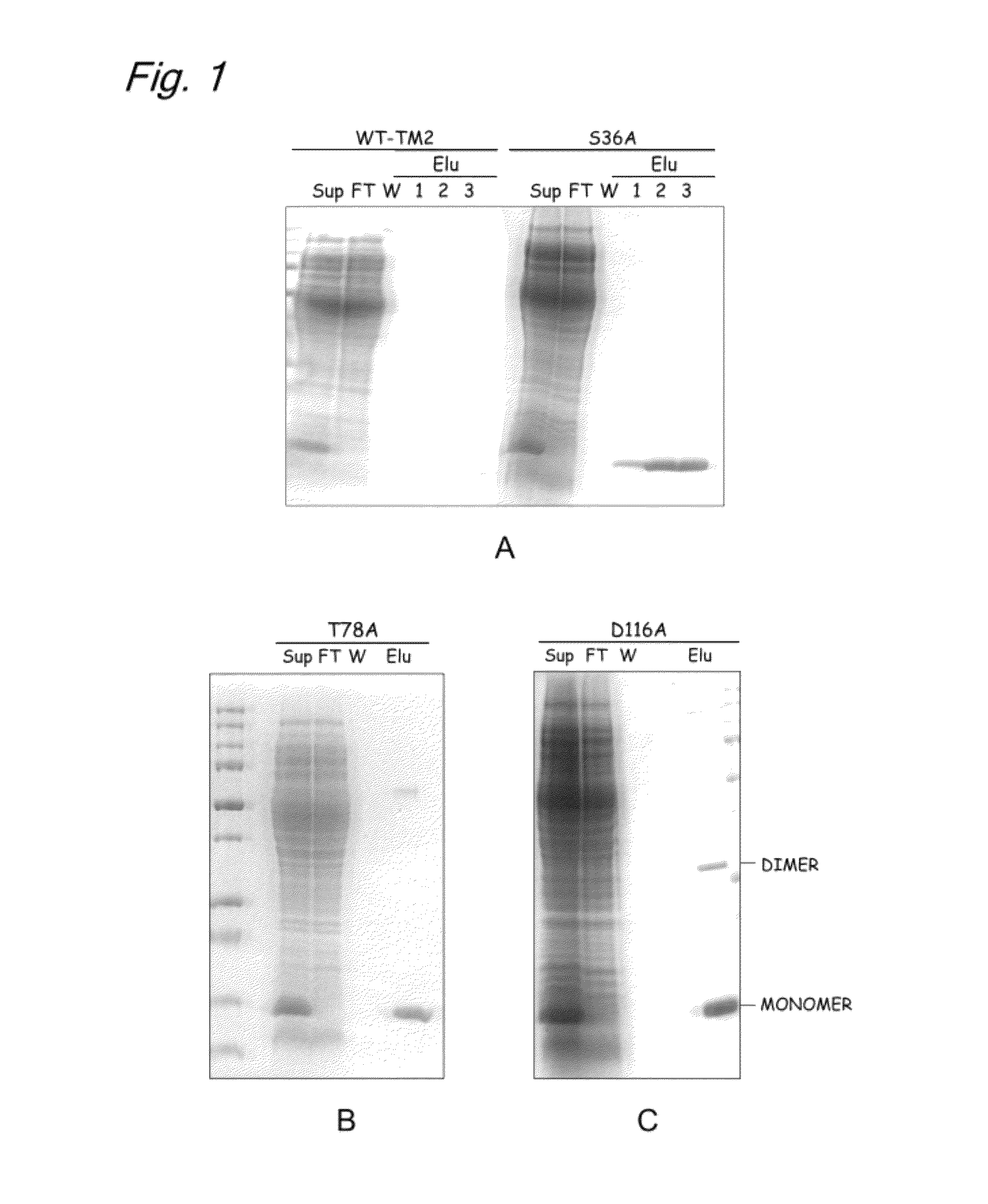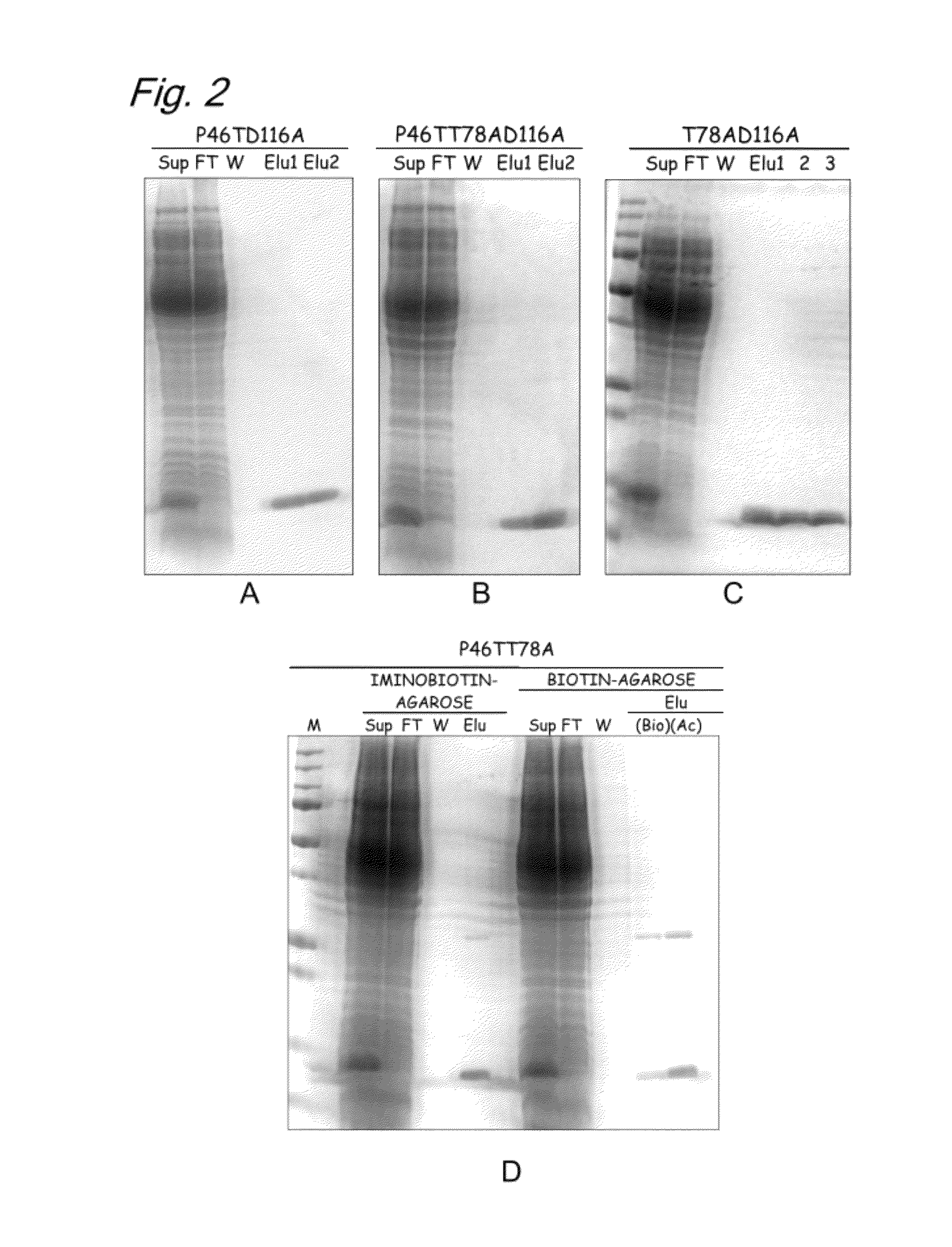Modified biotin-binding protein
a biotin-binding protein and modified technology, applied in the field of modified biotin-binding proteins, can solve the problems of non-specific binding to biomolecules, the difficulty of nitration, and the inability of known avidin and streptavidin to directly apply to the technical fields that require reversible binding, and achieve high-expressed effects
- Summary
- Abstract
- Description
- Claims
- Application Information
AI Technical Summary
Benefits of technology
Problems solved by technology
Method used
Image
Examples
example 1
Construction and Analysis of Low Affinity Tamavidin 2 (LATM2)
[0244]1-1. Construction of Low Affinity Tamavidin 2 (Hereinafter Referred to as LATM2)
[0245]The present inventors have performed comparative investigation for amino acid sequences of streptavidin and TM2 based on the knowledge about crystal structure of streptavidin, have estimated amino acid residues interacting with biotin in TM2, and have obtained the findings that arrangement of these amino acids resembled that of amino acids interacting with biotin in streptavidin. Based on the findings, it was estimated that the 69th, 80th, 96th, and 108th tryptophan residues in the amino acid sequence of TM2 were amino acids hydrophobically binding to biotin and that the 14th asparagine, the 18th serine, the 34th tyrosine, the 36th serine, the 76th serine, the 78th threonine, and the 116th aspartic acid in the amino acid sequence of TM2 were amino acids forming hydrogen bonds with biotin. The results of the investigation show that t...
example 2
Purification of Biotinylated Protein by LATM2
[0323]A carrier to which LATM2 was immobilized was prepared to confirm whether or not LATM2 prepared as described above can efficiently purify a biotinylated protein.
[0324]2-1. Preparation of LATM2-Sepharose
[0325]In order to investigate whether or not a biotinylated protein can be efficiently purified with LATM2, TM2 S36A was immobilized to Sepharose to prepare TM2-S36A-Sepharose.
[0326]The resin packed in HiTrapNHS-activated HP (manufactured by GE Healthcare) was taken out and was resuspended in isopropanol. The isopropanol was removed by centrifugation (3000 rpm), followed by addition of 10 mL of cooled 1 mM HCl thereto for activation. After centrifugation (3000 rpm), the supernatant was removed, followed by addition of 10 mL of cooled Milli-Q water thereto.
[0327]The Milli-Q water was removed by centrifugation (3000 rpm), and 0.9 mL of 1.3 mg / mL of TM2 S36A was added thereto, followed by upside-down mixing at room temperature for 3 hr. A...
PUM
 Login to View More
Login to View More Abstract
Description
Claims
Application Information
 Login to View More
Login to View More - R&D
- Intellectual Property
- Life Sciences
- Materials
- Tech Scout
- Unparalleled Data Quality
- Higher Quality Content
- 60% Fewer Hallucinations
Browse by: Latest US Patents, China's latest patents, Technical Efficacy Thesaurus, Application Domain, Technology Topic, Popular Technical Reports.
© 2025 PatSnap. All rights reserved.Legal|Privacy policy|Modern Slavery Act Transparency Statement|Sitemap|About US| Contact US: help@patsnap.com



